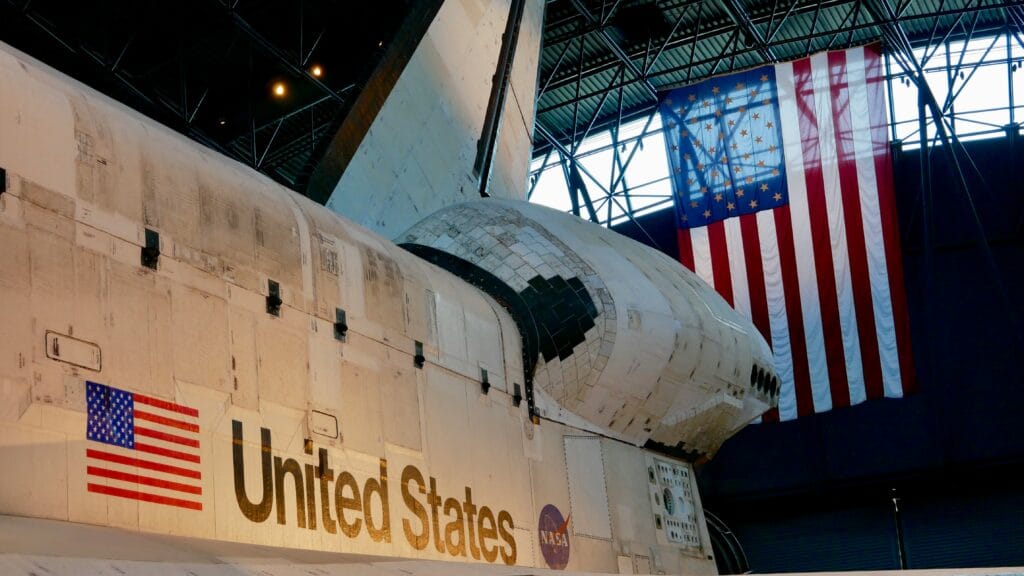For home-schooling families, finding rich, immersive learning experiences is key to a successful education. The Smithsonian Museums in Washington, D.C. provide just that—a treasure trove of educational opportunities, hands-on learning, and endless exploration. As a home-schooler’s paradise, the Smithsonian museums offer something for every learner, from budding scientists and aspiring historians to young artists and naturalists. Here’s why the Smithsonian Museums should be on every home-school family’s must-visit list.

The Smithsonian Institution: A Hub of Free Education
The Smithsonian Institution, often referred to as “the nation’s attic,” is the world’s largest museum and research complex, comprising 19 museums, galleries, and a zoo. One of the most appealing aspects for home-school families is that all Smithsonian museums offer free admission, making it a cost-effective way to access world-class educational resources.
From the National Museum of Natural History to the National Air and Space Museum, the Smithsonian museums cover a wide array of subjects that align perfectly with home-school curricula. Whether you’re exploring ancient civilizations, the wonders of space, or America’s rich cultural heritage, the Smithsonian museums provide the perfect backdrop for experiential learning.
Hands-On Learning and Interactive Exhibits
One of the greatest advantages of the Smithsonian museums for home-schoolers is the abundance of hands-on learning opportunities. Children can engage with interactive exhibits, participate in live demonstrations, and even take part in educational workshops. The National Museum of American History, for example, allows visitors to step into history through exhibits like “The First Ladies” and “America on the Move,” where students can learn about the nation’s past through real artefacts and immersive storytelling.
Similarly, the National Air and Space Museum is a haven for aspiring astronauts and young scientists. With its flight simulators, planetarium shows, and interactive displays on aviation and space exploration, it offers a captivating way to learn about the science of flight and the universe beyond Earth.
Customised Learning Paths for Every Interest

The beauty of the Smithsonian museums lies in their diversity, which allows home-school families to create customised learning paths tailored to each child’s interests. For children fascinated by the natural world, the National Museum of Natural History provides endless opportunities to explore everything from dinosaur fossils and ancient human artefacts to live insect zoos and oceanic wonders. The museum’s Q?rius (pronounced “curious”) learning space is designed specifically for teens, offering a more in-depth and interactive experience with collections that go beyond traditional exhibits.
For art enthusiasts, the Smithsonian American Art Museum and the National Portrait Gallery house extensive collections of American art spanning centuries, while the Hirshhorn Museum and Sculpture Garden offers contemporary art experiences, encouraging children to think creatively and critically about modern artistic expression.
Science and Technology for the Innovators
For those with a keen interest in STEM (Science, Technology, Engineering, and Mathematics), the Smithsonian museums are a goldmine. The National Air and Space Museum and the Steven F. Udvar-Hazy Center are filled with aircraft, spacecraft, and other technological marvels that chart humanity’s journey into the skies and beyond. Workshops and guided tours can provide deeper insights into the science behind these innovations, ideal for home-schoolers looking to delve into aerospace engineering, physics, and astronomy.
The Smithsonian National Zoo also adds to the STEM experience by focusing on biology, conservation, and ecology. Home-schoolers can learn about endangered species, animal behaviour, and the science of conservation through both self-guided and educator-led programs.
Encouraging Critical Thinking and Inquiry-Based Learning
The Smithsonian museums aren’t just about absorbing facts; they encourage critical thinking and inquiry-based learning, which are cornerstones of a successful home-school education. Many exhibits are designed to prompt questions and discussion, allowing children to explore and develop their understanding rather than just passively receiving information. This method of learning fosters curiosity, problem-solving skills, and independent thinking.

Resources and Support for Home-School Families
The Smithsonian Institution provides a wealth of resources tailored specifically for home-school families. Many of the museums offer free educational materials, downloadable lesson plans, and virtual learning experiences that can be incorporated into a home-school curriculum. Additionally, the Smithsonian Learning Lab offers online tools and resources that allow students and educators to explore the vast collections of the Smithsonian from anywhere in the world.
Workshops, family days, and home-school-specific programs are also regularly hosted by the museums, providing opportunities for hands-on learning, socialisation, and community building. These programs often cater to different age groups, ensuring that all home-school students, from primary to secondary level, have access to suitable and engaging educational content.
Practical Tips for Planning a Smithsonian Visit
- Prioritise Your Visits: With 19 museums to explore, it’s essential to prioritise based on your educational goals. Focus on a few museums per visit to ensure a deep and enriching experience.
- Check for Special Programs: Look ahead for any special events, workshops, or home-school days that align with your curriculum.
- Take Advantage of Free Resources: Use the Smithsonian Learning Lab to plan your visit and enhance the learning experience with supplementary resources.
- Pack Smart: Most of the museums are large, and exploring them can be tiring. Pack snacks, water, and comfortable walking shoes to keep everyone energised.

Final Thoughts
The Smithsonian Museums in Washington, D.C. are more than just a collection of exhibits—they are an educational playground for home-schoolers. With their commitment to free access, hands-on learning, and diverse range of topics, they provide an unparalleled opportunity for families to explore, learn, and grow together. For home-school families looking to enrich their educational experience, a visit to the Smithsonian museums is truly a must. Spending time at these museums was wonderful and made me think what a positive and enriching experience home-schooling must be for those that live nearby.


4 comments
Looking for direct advertisers is like building personal relationships with brands. When I started doing this, I realized that open dialogue and honest cooperation always wins. I was lucky enough to deal with a company called TOP Affiliate Network. It’s important to understand your audience and offer the company something that really fits them. In this format, you don’t just get money, you get more trust from the brand, and that’s always for the best for both parties.
The Smithsonian Museums sound like a dream come true with their free admission, hands-on Crazy Cattle 3D exhibits, and tailored learning paths for every interest—science, history, art, you name it!
This post nails why the Smithsonian is a must for home-schoolers. The hands-on learning is unreal! And hey, if you’re looking for a fun distraction, check out this game—it’s just a cool way to unwind after all that brainwork. animefinalstrike
Thank you for the article — after reading it, I realized that the Smithsonian is not only for tourists, but is actually a great learning environment for children.